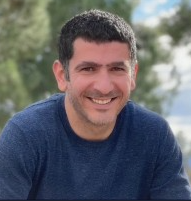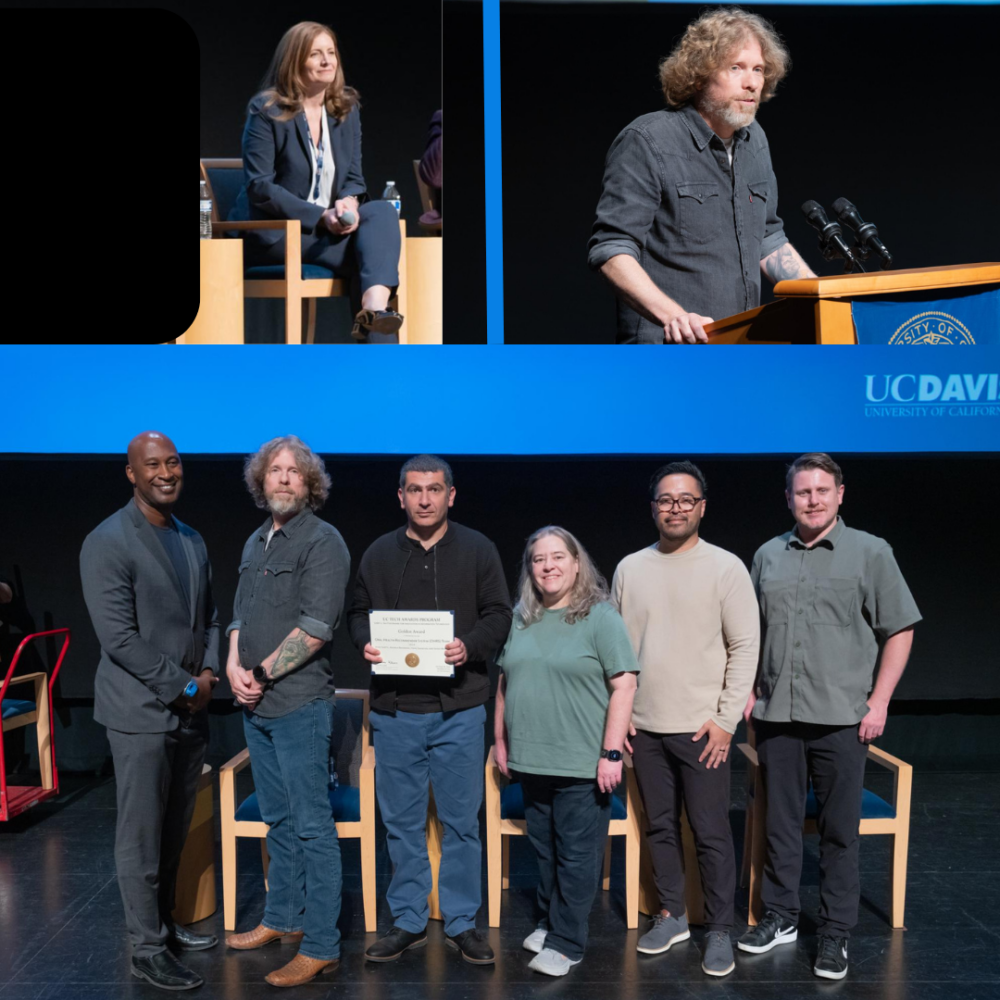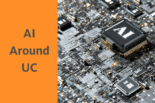The need for a dynamic, personalized system to dispense dental education and hygiene practices effectively is crucial to population health. UCLA is advancing toward this goal with its Oral Health Recommender System (OHRS). For its work in this domain, UCLA’s team won the golden UC Tech Larry L. Sautter Award for Innovation in Information Technology. They developed an Oral Health Recommender System (OHRS), employing generative artificial intelligence and a mobile app. The project team includes Vivek Shetty (UCLA), Andrew Browning (UCLA), Susan Murphy (Harvard), Inbal Billie Nahum-Shani (University of Michigan) Anna Trella (Harvard), Stephanie Marita Carpenter (Arizona State University), Cody Diefenthaler (Florida State University), Dennis Ruenger (UCLA), Jenin Alcaraz (UCLA), and Hayk Zakaryan (UCLA).
Summary
Oral Health Recommender System (OHRS) is a multi-university effort, which has been developed in cooperation with Procter & Gamble (P&G). Participating universities are UCLA, Harvard University, University of Michigan, Arizona State University, and Florida State University.
Brushing data is stored in AWS Cloud and analyzed by a custom-built Reinforcement Learning Engine to encourage better dental hygiene and reward desired brushing behaviors for underserved populations. Read the team’s original application to learn more.
Narrative
Background:
Dental disease, stemming from insufficient and improper oral self-care habits, is a chronic illness leading to gum disease, tooth decay, and eventual tooth loss. Conventional oral hygiene guidance from dental clinics lacks longevity and fails to encourage sustained dental care. Current approaches provide generic instructions not tailored to individual patients, perpetuating inadequate dental hygiene habits. Thus, there’s a pressing need for a dynamic, personalized system to dispense dental education and hygiene practices effectively.
Innovation:
Researchers at UCLA’s Dentistry department have developed an Oral Health Recommender System (OHRS) employing generative artificial intelligence and a mobile app. This system offers personalized advice on maintaining oral health between dental appointments. Integrated with sensors, an electric toothbrush collects patient data on dental hygiene practices, which are then fed into the smartphone app. Utilizing artificial intelligence, the app delivers customized behavioral interventions to promote proper oral self-care practices. This innovative technology has the potential to avert dental disease by addressing improper and insufficient oral hygiene behaviors.
Project Architecture and Complexity
The following is the diagram of the OHRS system:

OHRS consists of multiple Native Mobile Applications (Oral-B Clinical, Oaralytics), Brushing Hardware, REDCap system, UCLA Main Controller with its UCLA DB engine, Monitoring Dashboard, Recommender Engine, Inferential Algorithm, Intervention Content Library.
Andrew Browning and Hayk Zakaryan (UCLA’s OARC Team) architected and developed the “UCLA Main Controller” System with its MySQL based database engine.
UCLA Main Controller is the main data source and connector engine for different components of the OHRS System. Main Controller is responsible for:
- Get real time brushing data from P&G cloud and make it available to different components of the OHRS System.
- Perform, track and monitor participant status (enrollment, participation, completion) in the Study. Make enrollment data available to different components of the OHRS System.
- In connection with RL Algorithm and Intervention Content Library, perform randomized selection of messages based on participants brushing habits.
- Transmits brushing, enrollment and user integration analytics data to the monitoring dashboard for data visualization.
- Performs daily refresh of data repositories.
- Maps out the journey for each category of messages for Oralytics app to display.
Impact and Mission Alignment:
The project aims to enhance brushing habits within underserved populations. Through systemic enhancements to brushing routines and the implementation of carefully crafted reward structure, OHRS represents a paradigm shift in the integration of healthcare and technology. Improved dental health through effective brushing directly aligns to the University’s patient care mission.
This collaborative initiative, spanning multiple universities and conducted in partnership with P&G, aims to provide support to diverse community members.
Success:
A forthcoming Randomized Controlled Trial (RCT) Study, utilizing OHRS Technologies, is scheduled for later this year, with several hundred participants already expressing willingness to enroll.
Timeline:
The work on OHRS project has been done over the last 24 months. The OHRS technology is currently being used in pre-trial test runs.
Which location was affected by the work?
UCLA, UCLA Health, Harvard University, University of Michigan, Arizona State University, Florida State University
Project Team
- Vivek Shetty – D.D.S – UCLA Dentistry – UCLA – Faculty
- Andrew Browning–Research Data and Web Platforms Manager–OARC – UCLA – Staff
- Susan Murphy – Professor of Statistics – Harvard University – Faculty
- Inbal Billie Nahum-Shani – Research Professor – Dynamic Decision-Making Center – University of Michigan – Faculty
- Anna Trella – Ph.D. Candidate – School of Engineering – Harvard University – Staff
- Stephanie Marita Carpenter – Assistant Professor – College of Health Solutions – Arizona State University – Faculty
- Cody Diefenthaler – Manager of Interactive Development – Center for Interactive Media – Florida State University – Faculty
- Dennis Ruenger – Statistician – Department of Medicine – UCLA – Staff
- Jenin Alcaraz – Staff Research Associate – UCLA Dentistry – UCLA Staff
- Hayk Zakaryan – Programmer Analyst – OARC – UCLA – Staff
Awardee and nominee marketing includes photos on @UCTechNews on Instagram, interviews, networking events and more. Contact UC Tech News for details.
Contact

Hayk Zakaryan
Programmer Analyst
Office of Advanced Research Computing (OARC)
UCLA







